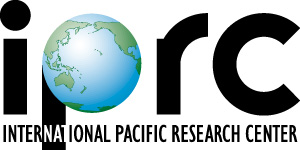  |
|
Midlatitude baroclinic Rossby waves
in a high-resolution OGCM
simulation
Kunihiro Aoki
ABSTRACT
We investigate the effects of
bottom pressure decoupling and baroclinic mean flow on mid-latitude oceanic
Rossby wave dynamics, using a high-resolution OGCM. To examine these effects
on the baroclinic Rossby wave, composite analysis is firstly carried out for
westward propagating signals of depth anomaly of permanent thermocline (27.0
sigma-theta surface) along 32N in the simulation. The phase speed is almost
1.5 times larger than that expected from the standard theory (here, the
standard theory means the assumption of flat bottom and no-mean flow ocean),
and the wave has a surface intensified structure, which is in good agreement
with the theoretical solution including mean flow and bottom pressure
decoupling effects. The theoretical phase speed including both effects
exceeds that of the wave in the simulation, where their differences are
eliminated by considering the effect of finite wavelength. We also study the
meridional distribution of the mid-latitude phase s peed in the simulation
using frequency-wavenumber spectrum. The theory including mean flow, bottom
pressure decoupling and finite wavelength effects reproduces the meridional
distribution very well. The dominant factor enhancing the phase speed is the
bottom pressure decoupling relating to rough bottom topography, especially
in the south Pacific because of relatively strong bottom stratification.
North of 30ºN, the baroclinic mean flow strongly contributes to the
enhancement of the phase speed, suggesting the importance of the mode water
in the Rossby wave speed.
|



